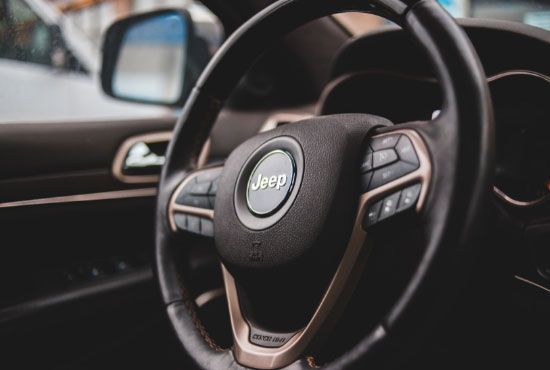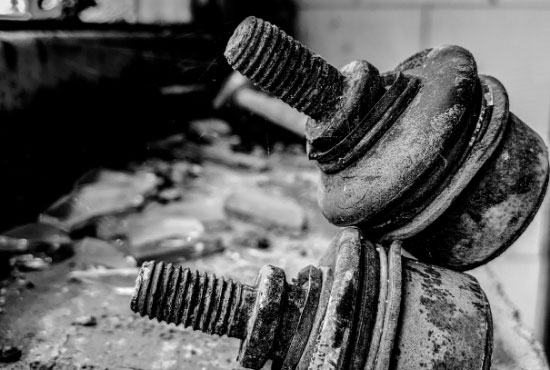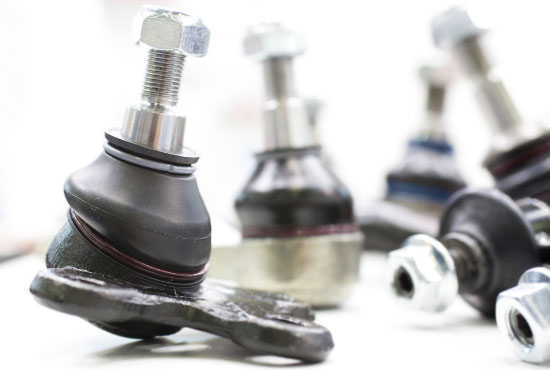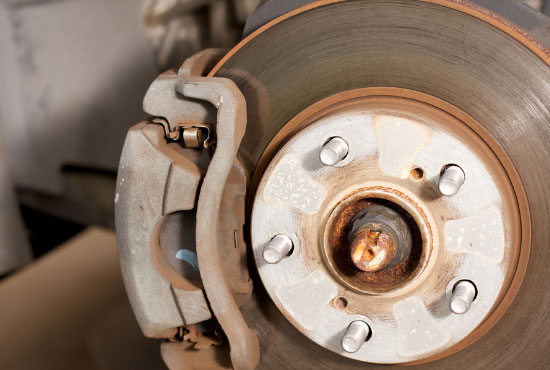The steering wheel is a major car component. It allows the driver to tell the vehicle where to go. When something goes wrong with the steering then you are in danger of having an accident.
How the steering wheel feels and responds to your commands can alert you to things that might be going wrong with your vehicle.
Unbalanced tires and rough road surfaces are the most frequent causes of steering wheel vibrations and jerking.
What Causes A Steering Wheel To Jerk When You Make A Turn?

The steering wheel in your vehicle may jerk or feel different because:
The Tires Are Unbalanced
Unbalanced tires are one of the main causes of steering wheels jerking and vibrating while you drive. When this is the cause of the unusual vibrations in the steering wheel you can rest assured that the problem is only going to get worse.
These tires can eventually reach a point where they blow out or cause you to have an accident. You should address them as soon as possible.
Other signs of unbalanced tires:
- The tread on the tire may be worn unevenly. More tread may be missing from the inner or outer portions of the tire. If this happens to your tire it can rupture and cause damage to your vehicle or cause you to have a severe accident.
- Your vehicle may start to use more fuel than it normally does.
What to do:
If you start to notice changes in your steering abilities because of vibrations, jerking or stiffness immediately inspect your tires to see if they are unbalanced. If you cannot tell if the tires need to be balanced, go to a tire shop and allow the professionals there to inspect your tires for you.
Remember that an ounce of prevention is better than a pound of cure.
Tie Rod Ends That Are Worn

The tie rods make a connection between the front wheels of the vehicle and the steering components of the car. The first thing you might notice when a tie rod end is damaged or worn out is vibrations in the steering wheel while you are driving.
Common symptoms associated with worn tie rod ends
- The tread on the tires will wear in an uneven configuration. The tie rod ends can affect the tire alignment which results in tires that wear quicker on the inner portion or outer portion instead of evenly across the entire width of the tire.
- Clunking noises especially when you are trying to execute a turn at a low rate of speed.
- If you jack the car up and take the weight off of the tire near the worn tie rod end then the wheel will feel loose and be easy to maneuver.
What to do:
If you suspect bad tie rod ends the only real solution is to change them out. Tie rod ends are one of the things that many vehicle owners do for themselves. The parts are reasonably priced and most vehicle owners have the tools to do the work without having to buy more.
Ball Joints That Are Going Bad

Ball joints that are worn or broken are also a frequent cause of steering wheels that jerk or vibrate while you are driving.
Other indicators of bad ball joints are:
- The vehicle pulls or drifts to one side
- The tire tread may wear out unevenly
- You start to hear unusual clunking or rattling noises
What to do:
If you are experienced with working on suspension systems or the brakes on your vehicle you can more than likely replace the ball joints without taking the vehicle to a mechanic shop.
You may need a press to make the replacement. If you do not own a press a big c-clamp can be used or you can check with your auto parts supply houses and see if they rent these tools by the hour or day.
Rotors Are Worn Or Severely Grooved

Wear and damage to your rotors can cause your vehicle to have vibrations in the steering wheel.
Other symptoms associated with worn rotors include:
- Screeching noises when you apply pressure to the brake pedal
- The rotors may appear to be turning blue. This is an indication of excessive heat that may happen when your brake pads are worn and have not been protecting your rotors.
What to do:
If you suspect that your rotor is the problem you need to visually inspect them. Run your hands over the surface of the rotor. It should feel smooth so if you feel grooves or bumps it is a sign that the rotor is ready to be replaced.
You can go to many auto parts stores or tire shops and have your rotors “turned”. They are placed into a machine that helps to grind away any rough surfaces and create a smooth surface again. This works well if the rotor is only slightly damaged, If the grooves are very deep or the rotor has been exposed to excessive heat then it will need to be replaced.
Broken Engine Mounts
Your steering wheel is the first indication of broken engine mounts. The broken mount can cause vibrations and jerking movements in the wheel.
Other symptoms of broken engine mounts include:
- The vehicle may seem to lurch or lunge forward when it is first started from a complete stop
- The ride comfort may be diminished and replaced with a bumpy and uncomfortable ride
- You may hear sounds that make you think one or more components under the vehicle are clunking together or making an impact with each other
- The mount may appear cracked or start to flake away
What to do:
When an engine mount breaks your only recourse is to change it out. If you do not replace the broken mount you can set yourself up for damages to your engine, damages to other car parts, and car parts breaking off while you are traveling. You cannot ignore a broken engine mount.
If one mount has broken it makes sense to change all of the mounts at the same time. This will save you from having to repeat the procedure in a short amount of time. When one mount breaks it places undue pressure on the other mounts to support the engine so the other mounts are compromised.
Axle damage
Axle damage is a major problem. The damaged axle may cause your wheels to stop rotating completely and nothing can be done until you replace the worn or broken axle.
Symptoms of a worn or damaged axle include:
- Steering wheel vibrations
- A jerking steering wheel
- It may become difficult to make your vehicle accelerate and gain speed
- Skidding or brakes slipping when you try to stop. This is caused because the broken axle causes the brake pads to be misaligned. This places you at great risk of an accident.
What to do:
The only thing you can do is replace the worn or broken axle. This is a rather difficult and time-consuming job so you may prefer to have it done in a shop rather than in your garage.
Frequently Asked Questions
Do Steering Wheels Wear Out?
Yes and no. The actual steering wheel does not wear out. The components connected to the steering wheel and the materials covering the steering wheel wear out.
Is It Expensive to Replace A Steering Wheel?
In most vehicles, a steering wheel replacement will cost close to $75.
Is It Safe To Drive A Car That Has A Steering Wheel That is Jerking?
This will depend on what is causing the steering wheel to jerk. If you are on a bumpy road then it is safe, if your tie rod ends are about to break then you may not be safe.
Final Thoughts
The steering wheel is one of the first indicators of many car problems. If your steering wheel is jerking or has severe vibrations do not ignore this. Evaluate the vehicle and locate the issue so you can be safe on the byways and highways.
Related Articles
1. Jeep Wrangler High Mileage Problems
2. Why Is My Jeep Wrangler Jerking While Accelerating?

